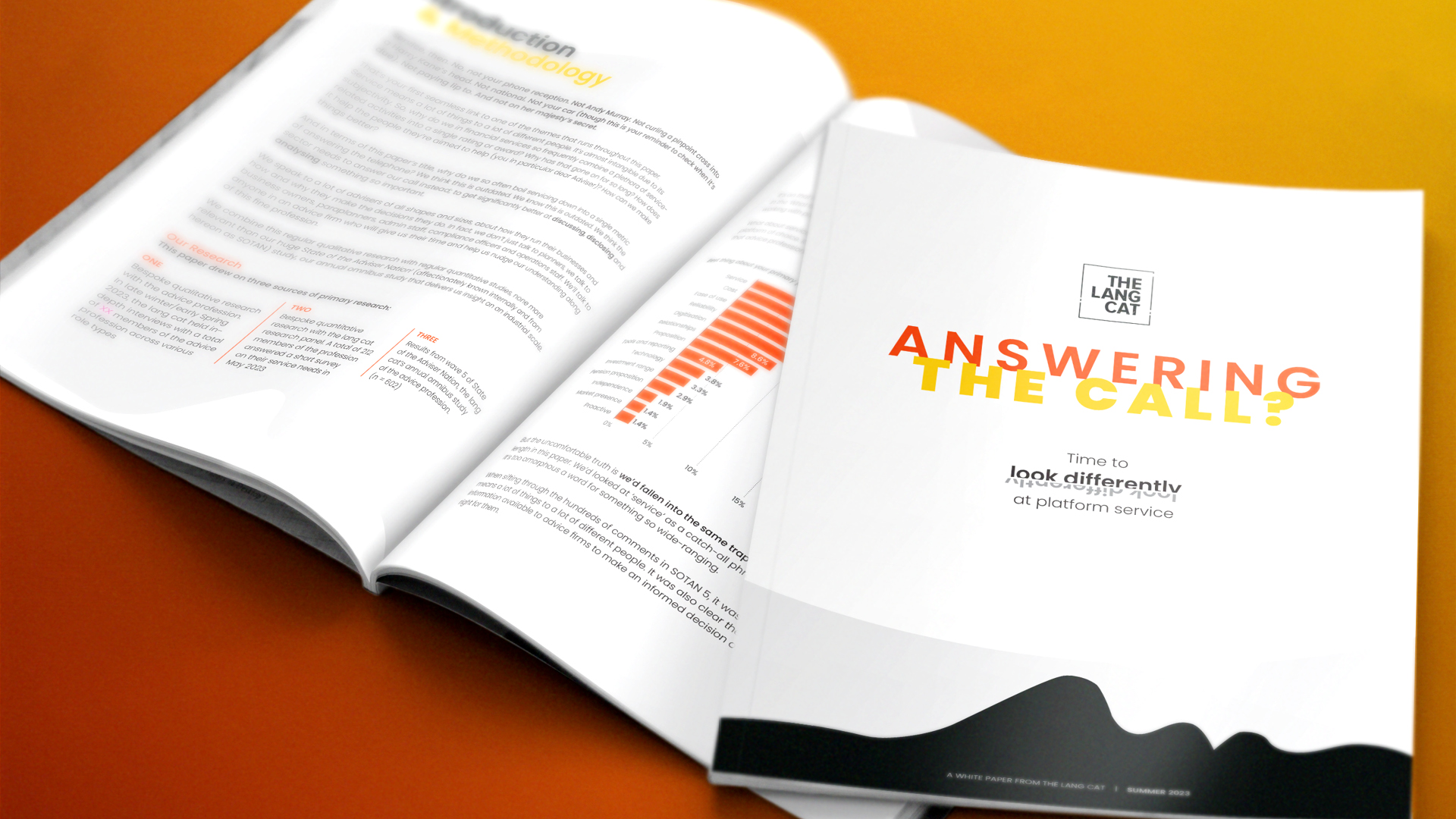Here at the lang cat, we’re no strangers to banging on about due diligence. We’re also not above making suggestions as to how it could be that little bit better/less painful for all concerned. But our feline musings have traditionally been aimed at platforms.
While no-one could accuse the regulator of being overly specific in articulating its expectations of adviser due diligence into platforms, it has at least offered some pointers between various papers and its list of nine issues that impact overall platform suitability for investors. Specialist SIPP providers by comparison, are left out in the cold.
But scrutiny is as scrutiny does and a lack of clear direction does not get in its way. The recent introduction of new capital adequacy limits for SIPPs is a prime example and has led to a greater focus on the sector than ever before. Which is where we come in. The lang cat is neither a regulator nor a SIPP provider (hope that helps) but we’ve been around the industry for long enough to think some deep(ish) thoughts and take a swing at what might matter in terms of scrutiny for advisers to be testing out SIPP providers with.
Turns out we’re far from alone in this. In light of all the industry noise, @sipp wanted to create a new due diligence guide. Now, anyone who has read a provider due diligence document might be forgiven for confusing it with a marketing brochure. Slanted, far from enchanted, silent on the difficult stuff and full of tilts here and there.
Advisers know this, and so do we, and so do the chaps at @sipp so they felt an independent approach might be refreshing. Something neutral, balanced, impervious to marketing fluff and adorned with occasional high-quality cat pictures. I might have added one of those criteria. And if this helped move the SIPP due diligence issue along a bit, then so much the better.
Anyway, we were happy to get to work. Particularly as @sipp let us develop the questions, and promised to answer the ones we came up with. So we developed a question set, made @sipp answer them, reviewed the responses (which we replicate faithfully in the paper) and added our own views. And that’s it. Oh, and there’s a brand new cat picture. Natch. And that’s the paper you will shortly have in front of you.
We end the paper with a few suggestions for advisers to help carry the whole thing forward. No-one likes a spoiler so I’ll let you find out for yourself when you download the paper. You’re going to, right? It’s free, after all.
A few things stood out for us as we put on our adviser hats (stylish, practical and at a jaunty angle) and worked through the process.
- Don’t get blinkered into looking at any one measure in isolation. The robustness of any financial provider, be it a platform or a specialist SIPP provider, is the sum of many parts. Looking at those parts individually and in aggregate speaks to the specifics of your business, clients and priorities.
- Due diligence is not a passive process. The onus is very much on you to create and maintain a relevant question set (and don’t forget to subject it to challenge). It should be structured to enable answers that first, are of use in the due dil process and secondly, don’t allow for a cut and paste from the Big Book of Self-Congratulatory Marketing Fluff.
- It’s not always all about the content of the responses. Sometimes how your due diligence request is treated can tell you everything you need to know, or a lot of it. Some things you have to take a provider’s word for but some you don’t. Test a claim of great customer service by picking up the phone.
I have enough self-awareness to know that a good number of you will have skimmed this blog looking for kissy noises about @sipp. Sorry to disappoint, but really? Have we met?
What I will say is that we’ve carried out a good number of commissioned analyses now and in each case we’ve found providers really doing their best to be open. There does seem to be an emerging willingness to engage, not only with potential customers, but with the industry as a whole. The days of – hoodwink marketing – aren’t dead, but we think providers are increasingly working out that honesty and transparency leads to more, better business in the long run. And that works for everyone.
Enough! Go download, and let us know what you think.




